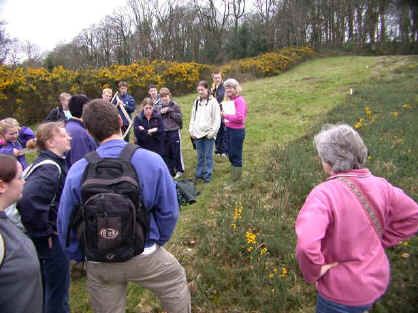
An Ecological Sampling Exercise
Processing & Interpreting Raw Data
Contents
Methods used to Gather the Raw Data

| Methods Students from Axe Valley Community College carried out a stratified random sampling exercise on strips 1 - 4 on the Heathland Restoration Project site at Offwell in March. The purpose was to investigate whether there was any difference in the % cover of Bluebells in spring-cut strips, as opposed to autumn-cut strips. The exercise also tested whether there was any difference between the % cover of Bluebells in the top of the strips (which are more influenced by neighbouring woodland) and the bottom of the strips, which are more open. The survey was carried out early in the spring, before the spring-cut strips were cut. At the time, the Bluebells were developing and were not yet flowering. This meant that care had to be taken not to misidentify sedges and woodrushes (which are also common in all the strips) as Bluebells. These can look quite similar to Bluebells in the vegetative stages.
Sampling involved determining the percentage cover of Bluebells in each quadrat. In each group, the same person estimated the % cover each time to reduce the effect of observer bias. Now try your skills at processing and analysing the raw data they collected, by carrying out the exercise devised for the Axe Valley students by Dr Wendy Graham. |
Continue to the follow-up Exercise
Thanks are due to Dr
Wendy Graham and the Axe Valley Community College,
for permission to publish the raw data and follow-up exercise.